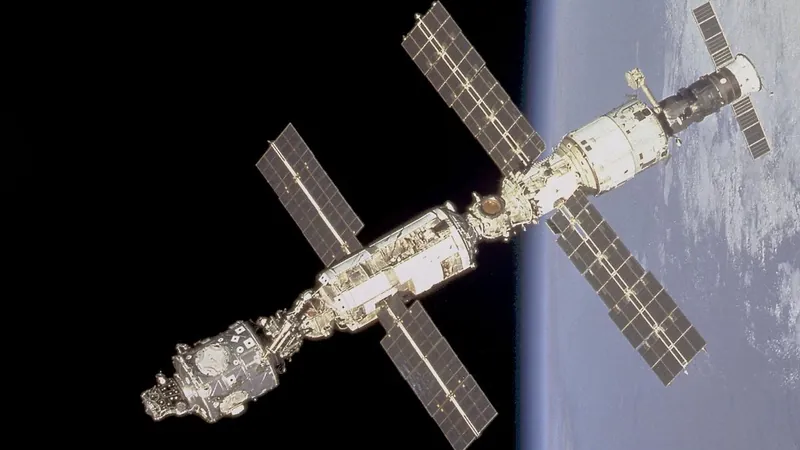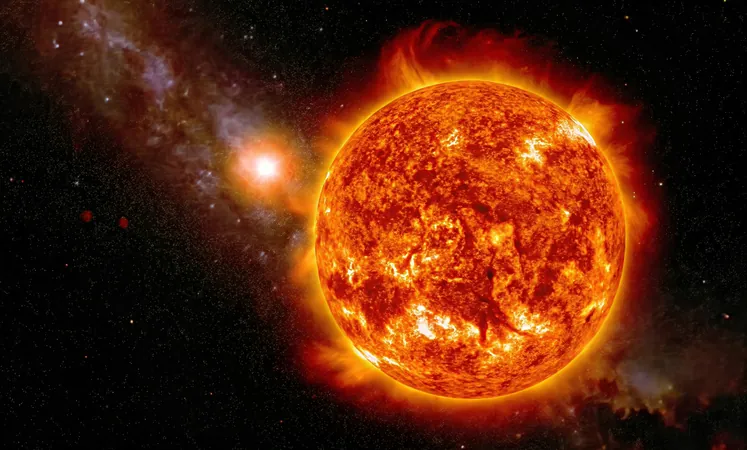
Alarming Leak on International Space Station: NASA Issues Catastrophic Warnings While Russian Officials Downplay Risk
2024-11-22
Author: Mei
Concerns Over ISS Leak
The International Space Station (ISS), a marvel of modern engineering that has been continuously occupied since November 2000, is facing serious concerns due to a significant leak in one of its Russian segments. This leak, situated in the PrK module that connects the Zvezda service module to the main structure of the station, has divided opinions between major space agencies like NASA and Russia's Roscosmos.
Background of the Leak
While the leak was first detected as far back as 2019, the root cause is still unknown. Since its discovery, Russian cosmonauts have implemented various measures to mitigate its impact, including sealing off the affected area when not in use. However, tensions have surfaced as NASA scientists now warn that the situation could be precarious for the continued operation of the ISS, scheduled to last until 2030. Bob Cabana, chair of NASA’s ISS Advisory Committee, expressed serious concerns during a public meeting, stating that the leak could lead to 'a catastrophic failure' if the situation worsens.
Disagreement Between Agencies
In stark contrast, Russian space agency officials have downplayed these warnings, asserting that the leak poses no significant threat to the station's operations. This disagreement raises critical questions about the future of international collaboration in space and the safety of the astronauts aboard.
Aging Infrastructure
The ISS has been subject to continuous mechanical wear and tear due in part to its aging infrastructure, which is around 25 years old. It is likely that years of operational stress, coupled with potential impacts from micrometeoroids and space debris, have contributed to this troubling leak. According to a NASA report, air is currently escaping at a rate of about 2 to 2.5 pounds (0.9 to 1.1 kilograms) per day above the station's equilibrium, with temporary spikes that have previously reached as high as 3.7 pounds per day (1.7 kg).
Monitoring and Future Actions
NASA and Roscosmos have agreed to monitor the leak closely and potentially seal off the segment entirely if the air loss rate is deemed 'untenable.' However, there seems to be no consensus between the two agencies on what constitutes an untenable situation, leaving astronauts at risk.
Contingency Plans
In a proactive measure, NASA plans to enhance contingency options by including an additional 'pallet seat' on future SpaceX Crew Dragon missions, enabling quicker evacuation if necessary. Astronaut Michael Barratt underscored the aging state of the station, warning that wear and tear will likely become more common across various systems.
Conclusion
As the situation continues to evolve, the collaboration—or lack thereof—between NASA and Roscosmos will be crucial in safeguarding the future of human presence in space. Could this escalating crisis put the entire ISS mission in jeopardy? Only time will tell.



 Brasil (PT)
Brasil (PT)
 Canada (EN)
Canada (EN)
 Chile (ES)
Chile (ES)
 España (ES)
España (ES)
 France (FR)
France (FR)
 Hong Kong (EN)
Hong Kong (EN)
 Italia (IT)
Italia (IT)
 日本 (JA)
日本 (JA)
 Magyarország (HU)
Magyarország (HU)
 Norge (NO)
Norge (NO)
 Polska (PL)
Polska (PL)
 Schweiz (DE)
Schweiz (DE)
 Singapore (EN)
Singapore (EN)
 Sverige (SV)
Sverige (SV)
 Suomi (FI)
Suomi (FI)
 Türkiye (TR)
Türkiye (TR)